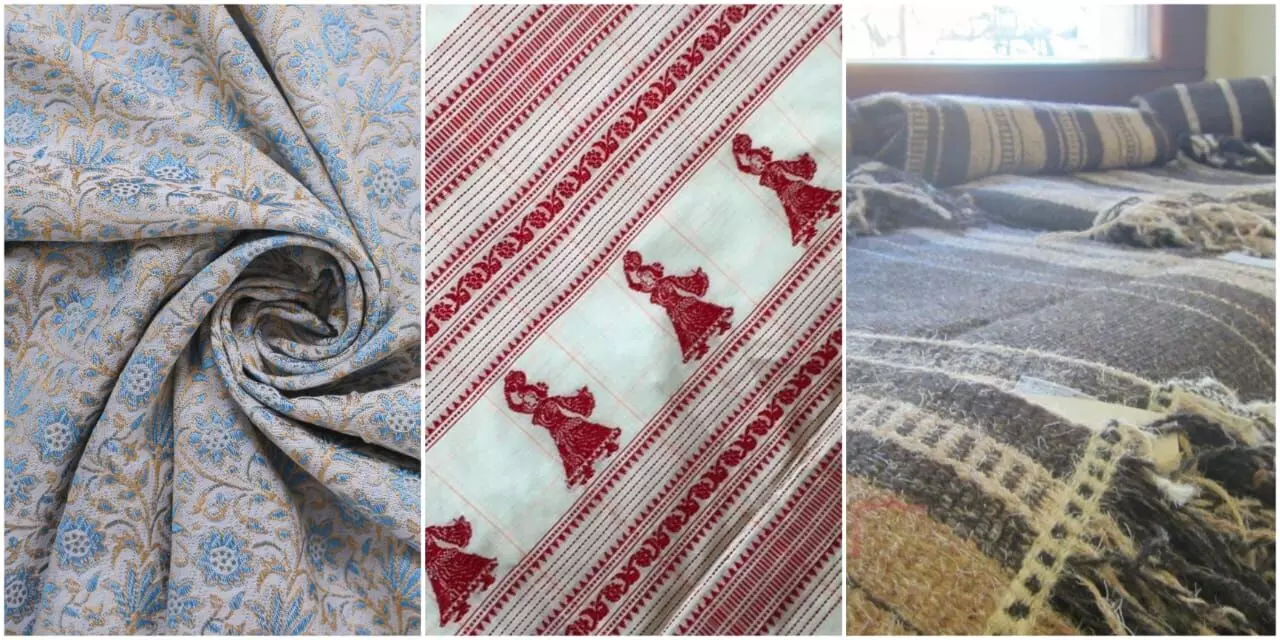Handmade heritage: Telangana's iconic Himroo weaving in UNESCO's list of 50 unique textiles
The UNESCO list, "Handmade for the 21st Century: Safeguarding Traditional Indian Textiles," lists the histories, legends, and the process of making the textiles.
By Amrutha Kosuru
Hyderabad: Telangana's Himroo weaving, Gongadi sheep wool blankets, and Siddipet's Gollabama weaving have been listed in UNESCO's list of nearly 50 unique textiles from across the country.
The UNESCO list, "Handmade for the 21st Century: Safeguarding Traditional Indian Textiles," lists the histories, legends, and the process of making the textiles.
Himroo: Fit of the Nizams
Himroo is an intricate weave with cotton warp interlaced with dense silk. Originally said to be famous in Aurangabad, the Nizams of Hyderabad donned sherwanis (coats) that were made from Himroo.
When the Nizams power faded in the 1960s, there was a decline in demand for Himroo. With weavers moving to other occupations, the number of families involved in Himroo weaving in Aurangabad declined significantly.
Himroo witnessed a renewal in Hyderabad primarily due to the efforts of textile revivalist Suraiya Hassan Bose (1928-2021) who invited weavers from Aurangabad to weave in her atelier. Bose gave them raw materials, a place for looms, and orders for their weaves, and thus inspired a resurgence in demand for Himroo textiles.
Gongadi sheep wool blankets
Gongadi blankets woven from the wool of the Deccani black sheep are part of the cultural heritage of the Kuruma shepherding community. The Deccani sheep is the only Indian breed that produces pure black coarse wool.
Gongadi blankets are used by Kuruma shepherds while grazing their flocks in all kinds of weather. Its many uses include being spread on the floor to sit on and as a spread for guests. The Gongadi blanket is also worn at rituals associated with births and weddings, and at festivals and fairs. Besides, it is used to carry food, grain, implements, and even newly born lambs.
Across India, many factors have impacted indigenous varieties of sheep and thus the market for sheep wool. These include a shift to breeding what is called 'mutton breeds', which have no wool that can be used. This has brought about a decline of the Deccani sheep and thus of Gongadi blanket weaving. It has also had a corresponding impact on wool spinning.
Gollabama weaving
"Hand-weaving Gollabama motifs on a sari is a painstaking process and requires great expertise and patience, which is why it is only done by senior weavers. It is a skill that has been passed down over decades, which may explain why less than 25 weavers practice this textile tradition today," the UNESCO report stated.
The Gollabama sarees or Siddipet Gollabama cotton saris are globally renowned and have obtained a Geographical Indication (GI) tag. The Siddipet Handloom Weavers Co-operative Society Limited was established in 1960 in Siddipet town and continues to manage the marketing and sales of these saris.